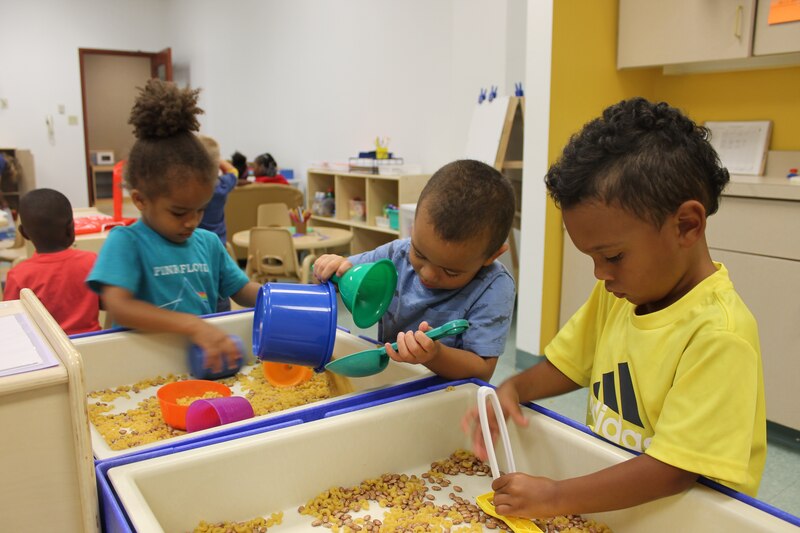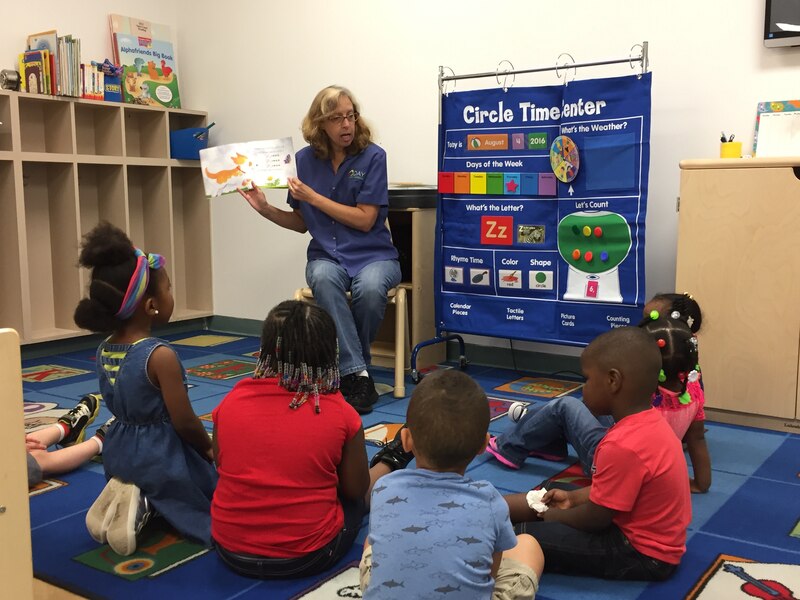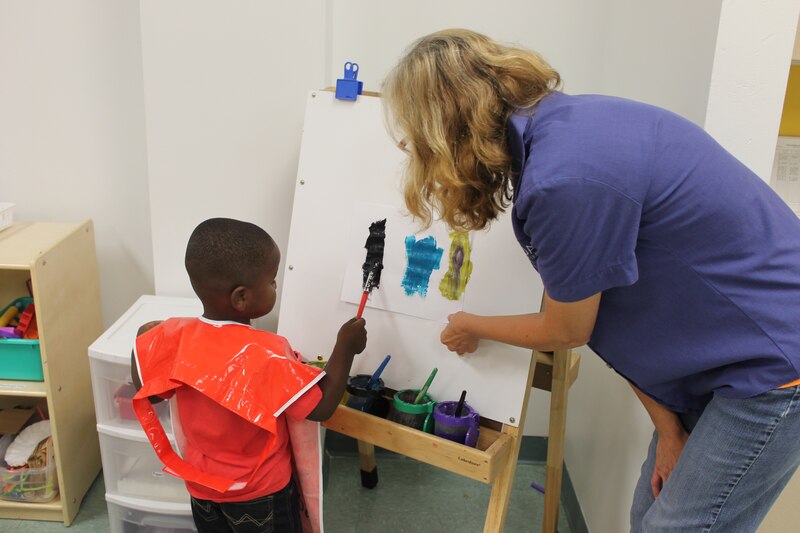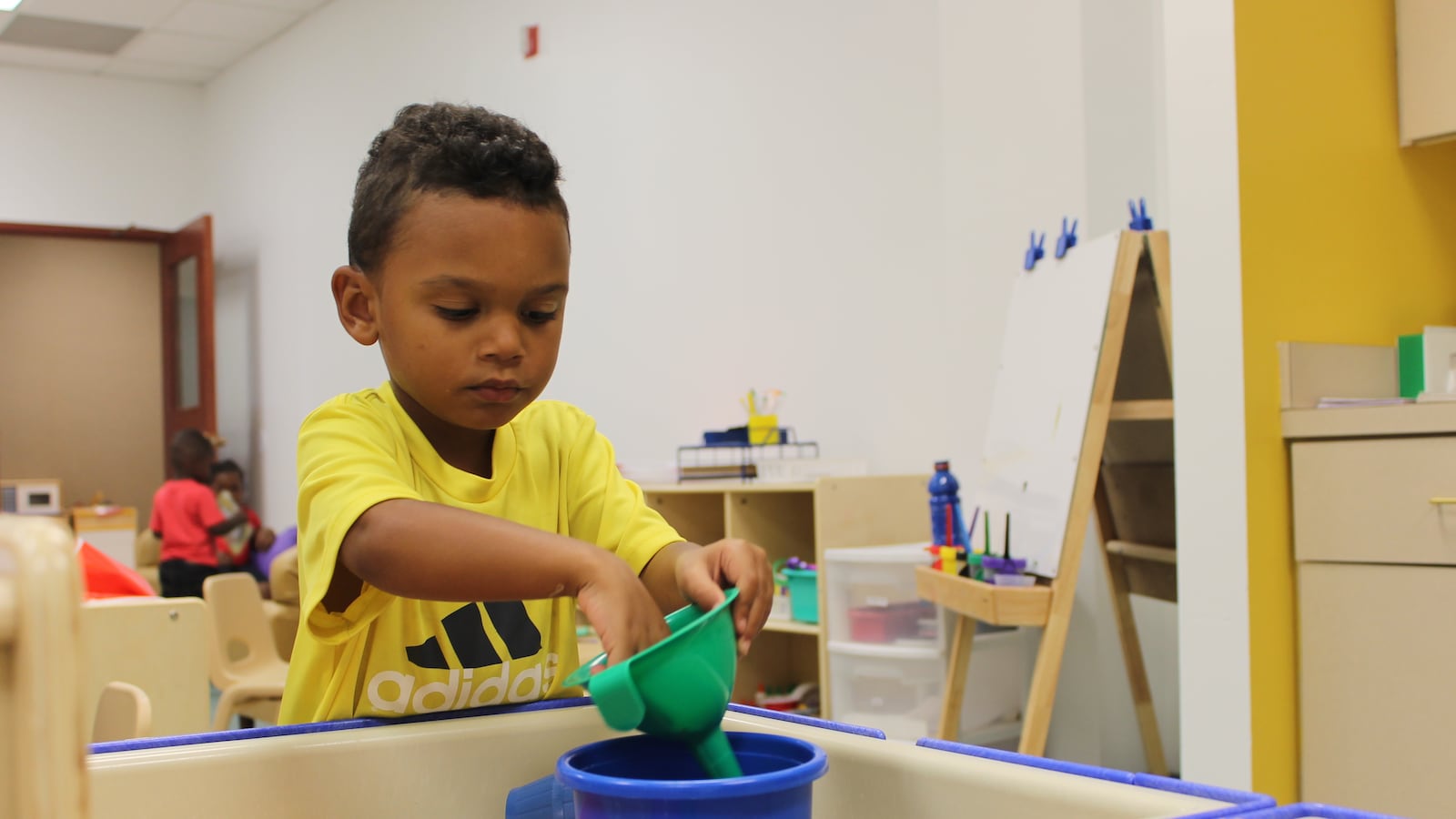It isn’t always easy to know what’s helping kids learn and what’s a waste of time in a classroom filled with three- and four-year-olds zigzagging around, playing with toys, assembling puzzles, grabbing books off shelves and smacking wet paint brushes on sheets of paper pinned to easels.
But in good preschools, all of those activities, however chaotic they may seem, are targeted at helping kids learn skills they’ll need to be ready to start reading and writing in kindergarten, and to discover the ability to manage their own behavior in a way that will allow them to work well with others.
It takes careful observation for parents shopping for preschools try to discern the good from the bad. So what should they look for?
Experts say little kids mostly learn through play. But as they play, good preschools pay attention to how they interact with others, reinforcing good choices and discouraging others. A simple test is to look at the faces of the kids and the adults: Do they seem happy? A more complicated test is to ask to see if the preschool has specific learning plans for kids at all levels. (The best ones do.)
Making the right choice can boost a young child’s readiness for the fast-approaching start of formal schooling.
“The students in today’s world have to be ready for kindergarten,” said Kenith Britt, dean of the Educators College at Marian University. “If they aren’t ready for kindergarten, the chance of them reading by third grade diminishes significantly just based on the nature of schools. … Early childhood learning gives them the opportunity to be prepared.”
Here are four ways parents can gauge whether a preschool has a quality program:
IF IT LOOKS JUST LIKE SCHOOL, THAT’S A RED FLAG
At Day Early Learning at Eastern Star Church on the eastside of Indianapolis, three-year-old Ra’Jon Whitaker scooped handfuls of dried beans and pasta out of a specially designed, waist-tall bins one morning last week.
There’s not a pencil or paper in sight for this activity.
First with his hands, and then with brightly-colored cups and a small shovel, Ra’Jon scooped and poured the beans. He filled a green funnel full of beans, and his face lit up with an idea about what his creation might be.
He turned and offered the cone to a teacher nearby.
“Here, I made you ice cream,” Ra’Jon said, pretending to lick the top.
That’s how unstructured, but purposeful, play turns into learning. Ra’Jon, with a wide variety of materials and tools at hand, recognized the shape of the funnel as equivalent to an ice cream cone.
“If a parent sees lots of chairs and desks and paper and pencils, that’s a warning sign,” Britt said. “Students need to learn how to play, learn how to communicate. … They need to focus on active learning.”
Playing with dried beans, pasta and other physical toys — like blocks that stack and connect or magnets — help preschoolers better understand their own sense of touch and the physics of the world around them.
“With little ones you can see how their brain works while they play,” said Karen Ruprecht, director of innovation for Early Learning Indiana. “They’re little scientists who are testing out theories and asking, ‘I wonder what will happen if I do this?’”

TIME SHOULD BE TREATED AS VALUABLE
It’s easy for preschools to waste a lot of time. Just ask anyone who has tried to line up a group of little ones for a “quick” trip to the bathroom or water fountain.
Good preschools limit unproductive time and capitalize on it for other types of learning. For example, children can learn to treat each other fairly and resolve disputes, like who has the next turn.
Walking in a line, sitting still and listening to instructions are all skills students need for kindergarten, and good preschools know how to teach them efficiently, said Kendra Thomas, assistant professor of psychology at the University of Indianapolis.
“Students learn to delay gratification, cooperate with others and pay attention,” she said. “All factors that affect a child and their success.”
At Eastern Star, preschool classes stay together in the same room most of the day. Transitions, such as from nap time to group time or to meal time, don’t drag on as children walk from room to room.
Teachers who are good observers use what they learn about students while they play to make connections when they work in groups or one-on-one.
Norma Callahan, the lead instructor in Ra’Jon’s classroom who has been working in childcare since 1989, said group time is where students begin building a foundation for what to expect in elementary school classrooms.
When one of her students, Lauren, chose to play with a puzzle that depicted the numbers 1-10, Callahan watched carefully. Lauren easily identified the numbers in order, but when Callahan began to point at numbers at random, Lauren struggled to name them. Callahan mentally added identifying numbers out of order to strategies she would use later during group learning. It’s an easy way to build on what Lauren and her classmates choose to discover on their own.
“Expanding on their choice is a learning opportunity,” Callahan said. “Expanding on it is what drives group time.”

KIDS ARE HAPPY WHEN THEY SEE THE SAME FACES
One-on-one connections between teachers and parents can play a huge role in learning.
The way Callahan carefully observed Lauren, for example, and responded to her needs builds trust and bolsters confidence.
So it’s a good sign if a preschool has a track record of treating its staff well and retaining most of its teachers from year to year. A good way for parents to tell a preschool is that sort of place is to simply pay close attention to whether the teachers look like they want to be there.
“Are teachers getting burnt out? Are they happy?” Thomas said. “The program should not have a high teacher turnover rate.”
On average, early educators leave their jobs within two or three years, according to Thomas. They often cite low pay and stress as reasons for leaving. So it’s worth asking about how competitive teacher pay is and what the preschool’s turnover rate is.
“Some of the most important things when raising a child is consistent discipline and warmth from a stable figure,” Thomas said.
Early Learning Indiana carefully monitors teacher morale, said Lisa Skinner, who directs the center at Eastern Star. The organization provides training, including a full-day session each August. It also makes a point to celebrate success.
“I work my staff hard, but we see the end results and we party,” Skinner said.

CHECK THE RATINGS
Indiana’s Family and Social Services Administration in 2008 launched Paths to Quality, a voluntary rating system for preschools and child care centers that offers a helpful guide for parents.
So far, 92 percent of licensed childcare centers and preschools statewide have participated, along with 70 percent of licensed homes providing child care.
The program’s website includes a 1 to 4 rating for all preschools that participate.
All told, 2,590 homes, centers and church ministries have been rated through Paths to Quality statewide. Of those, 61 percent rate as a 1 or 2, meaning they only meet basic safety and health requirements. In Indianapolis, the numbers are more bleak. Fewer than 40 percent of homes, centers and ministries rated a 3 or 4.
Still, the number of preschools and child care centers rated a 4, which requires national accreditation, is growing fast — to 363 this year, up from about 100 at the start.

